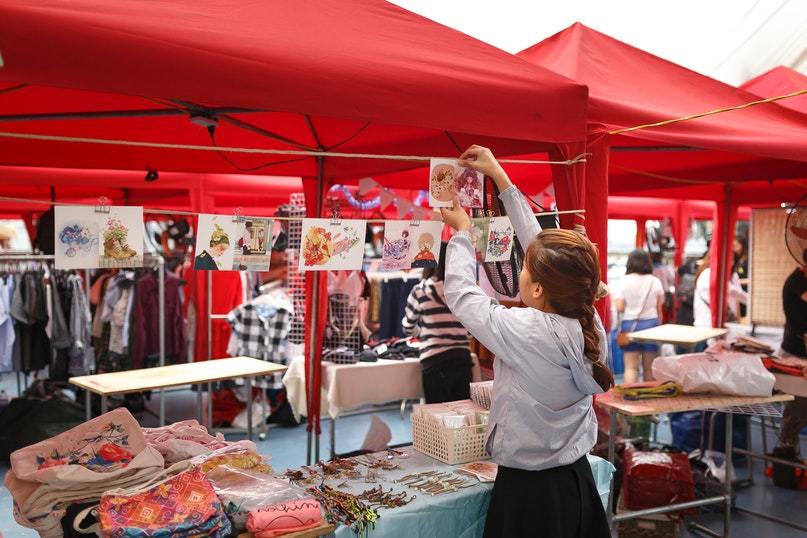Create Time 2019-04-25 03:04 Views:19166

When you think of counterfeit, your mind may take you back to old gangster films, Al Capone, urban cowboys and art thieves. Unfortunately, China also comes to mind. These days “made in China” is becoming synonymous with “cheap and fake” in the court of public opinion. In our last blog, we discussed how China is the world’s second largest economy with over 5 million trademarks registered in 2017 alone. Now let’s address the elephant in the room — counterfeit, and how you can avoid it.
If you read the news, you’ve probably heard a lot about China’s counterfeit market. If not, let’s lay out some hard stats for you:
86% of the world’s counterfeit goods come from China
These counterfeits have an estimated value of $397 billion USD
Counterfeits make up 12.5% of China exports
Again, China is the top country for trademark filing, with millions of trademark applications filed every year. The China Trademark Office (CTMO) juggles expediting the examination process to meet market demands as well as ensuring that only genuine applications are accepted.
The entire process must be completed in nine months barring rejection and opposition, which is significantly faster than in North America. Besides the sheer amount of filings, in 2017 alone the CTMO had to facilitate 72,575 oppositions, 28,000 cancellations, and 33,190 removals. With all this going on, sometimes a bad faith trademark or a counterfeit good can slip through the cracks.
Looking at these numbers and China’s notorious reputation for trademark infringement and counterfeits, you must be thinking, “I’d have to be crazy to take my trademark to China!”
Why are we telling you this? Why is Witmart, a company offering trademark services in China, being open about Chinese counterfeits? Because we value transparency and because we know that the best way to protect your trademark in China is to register in China.
Let’s put it this way: you work at an office and the CEO announces that they are bringing a cake to celebrate everyone’s hard work. For whatever reason, you don’t show up to work that day. What happens? Your coworkers divide the cake amongst themselves and nobody saves you a slice. After all, it’ll be stale by tomorrow.
You could have your cake and eat it too; but you have to show up to the party.
Different schools, different rules.
Remember: China operates on different rules. They have a first to file system, meaning it is perfectly legal to register a trademark without proof of use or proof of intent to use. Additionally, China does not recognize famous brands outside of China. Therefore, a small company could have, with full legality, trademarked “iPhone” long before Apple showed up in China — which is exactly what happened. Now Apple has to be careful in China to only use their trademark for the actual phone, and not on any bags or cases, to avoid confusion with the much smaller company that got to the trademark first. When filing your trademark outside of your own country, you have to keep in mind that you must abide by the legal landscape of that jurisdiction.
The best defense is a good offense.
So, what can you do as a business owner? The only way to ensure that you won’t see copies of your goods and services pouring out of China is to register a trademark filing with the CTMO. Having a registered trademark gives you the legal clout to shut down copycats. You want to be the first to register your mark so that no other company can do so legally. Witmart can accelerate the registration process with our speedy filing and IP capabilities in collaboration with our China offices.
If you’re not ready to enter the Chinese market just yet, it’s still worth the investment of filing in China because it’s a first to file country. It means you can protect your intellectual property well in advance. That’s how you use the system to your advantage to get ahead of counterfeits.
If your trademark is in legitimate use by another company, one option is to buy it back. We recommend you use a Chinese lawyer for this process, as you will get a better deal than if you go straight to the seller. Witmart will work with our partners at the award-winning LongAn Law Firm in Beijing, China to make sure you get the help you need to take back your intellectual property.
Another more budget-friendly option is to rebrand yourself to sell in China. Generally, if you don’t come up with a Chinese version of your brand, the Chinese market will make one up for you (and we can’t guarantee you’ll like it) as people prefer to buy in their first language. Plenty of brands opt to rename themselves and use the new name strictly for selling in China.
Rebranding can pose a risk from a global brand awareness perspective, but our trademark experts can help you navigate any complications. Feel free to give us a call at 1-855-497-7273 to discuss the best option for your business.
Keep in mind, you can only claim infringement if your trademark is registered in China.
If your registered China trademark is infringed upon, you have several options to enforce the ownership of your mark. Criminal infringement requires you to take your case to the People’s Court of China. It can take anywhere between three to six months to reach a resolution depending on the nature of the lawsuit, but if you have your certificate of registration and you can show that you have been damaged by the infringing party, you have a strong case and will most likely achieve an injunction on the infringers and payment of damages.
If you have registered IP rights in Mainland China, you can record your IP with the General Administrations of Customs (GAC) for a small fee of $160 CAD. The GAC monitors Chinese imports and exports and has the authority to seize and detain any goods that are suspected of infringement. If there is any information on suspected or known infringers, you can register that information with the GAC to help with their screening. You should also register your IP with customs in any country where you do business.
What is China doing to protect businesses?
The Chinese government is taking steps to better protect business owners. In December, Beijing empowered trademark appeals to be heard by China’s Supreme Court, not just provincial level courts. The CTMO invited public comments throughout 2018 in order to make appropriate amendments between 2020 and 2022. Once the new legislation is in place, trademark application examiners will be able to request proof of intent to use and analyze registrant application patterns to identify abnormal and bad faith applications. There is also talk of AI being programmed to spot and filter out these types of applications. This will be a great step towards preventing cyber-squatting and infringement.
The best time to register your China trademark is yesterday, so don’t delay. Our Witmart team of experts is available to help your business navigate the confusing world China trademark registration, monitoring and enforcement with ease. We’ll act as your ambassador in China, ensuring that you will always beat the counterfeit culture.
Want to learn more? Visit our China trademark website and sign up for your free consultation today!
Disclaimer: This website is not intended to offer legal advice or to be a substitute for a consultation on a case-by-case basis with an attorney. The information provided above is meant for informational purposes only and may be subject to change.
© 2019 Witmart, Inc. All Rights